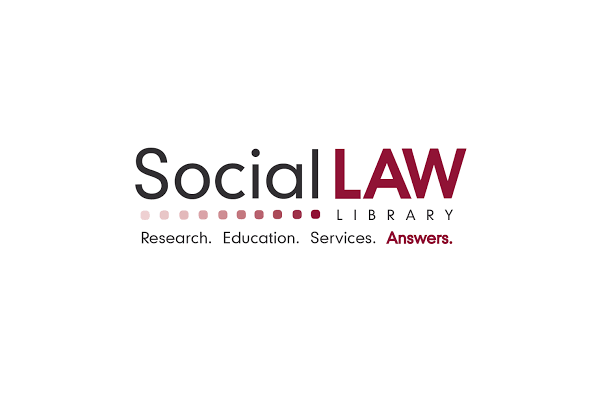Economics are changing in every industry. Find out how you can emerge as a leader at a critical time in the legal profession.
“Everything in modern society is the result of a collection of decisions made by someone. Why shouldn’t that someone be you?”
– Tom Kelley & David Kelley, Creative Confidence
Many organizations today, including just about every law firm that isn’t in the Am Law 25 and all but a handful of law schools, are facing existential challenges. The culprit? A shrinking demand for most lawyers. A story on the declining demand for lawyers was among the top ten on Above the Law in 2017.
For most law firms and lawyers, creating marketplace value is elusive. Conclusion: There is something about the legal industry that is crying out for an innovative redesign, without which, the desire for using lawyers will cease to exist for many former consumers of traditional legal services. Design, existence, and value are inextricably intertwined. This is a hard lesson for many to learn. Law firms are not alone in this group. Approximately one-third of all US companies are struggling to create value.
The 2018 Client Advisory by Citi and Hildebrandt Consulting, LLC, projects an average of single digit revenue and growth with continued industry consolidation. While a few firms are doing very well, there is “a widening gap between the most profitable firms” and the rest of the Am Law 200 firms. The market for most firms is soft. Indeed, projections for the future are that law firm revenue will decline while in-house and alternative providers’ shares of the market will increase.
Acquisitions and mergers often do not solve the problem. Often contributing are leaders, who have not mastered and do not model trust, cross-cultural competence, and cross-selling. The result is that these solutions often may make things worse.
A partner who left a recently combined firm explained, “As a partner in the acquired firm, I ended up in a satellite office of a satellite office. The two sides never merged. The [acquiring firm] expected its norms to control resulting in significant partner attrition. Absent meaningful dialogue, trust will never form and cross-selling becomes grossly overstated.” Instead of creating sustainability, the combination ended in significant vulnerability.
Solo and small firms, which arguably are nimbler, still need to adapt to changing demands to translate that into growth for a sustainable future. In 2014, Richard Susskind argued that there was no future for these firms beyond 2020, non-lawyer ownership of firms was critical, and many of tomorrow’s lawyers would be technology or people in supporting roles without a law degree. And yet in 2017, 86% of these solo-small lawyers characterized their firm as successful. Importantly, these lawyers have recalibrated success measures. The primary measure of success reported by 75% of lawyers studied in the Thomson Reuters 2017 State of US Small Law Firms was something other than profit. The report continues to say that attracting and retaining client business continues to be the top significant challenge, and 71% of the lawyers with this challenge are not addressing it. So while the meaning of success is subjective, lawyers need to earn a reasonable profit to support themselves and their families.
THE PROBLEM: Capacity v. Complexity
Leaders continue to apply capacity solutions to complexity problems. If the problem is phrased as a shrinking demand for lawyers, the solution is fewer lawyers competing for clients. If the problem is phrased as the cost for legal services, then efficiency and reducing resource demand is a solution. However, a shrinking demand is also a symptom of an existential, complexity problem, a sign that it’s time to redesign legal.
A capacity problem is solved by adding, subtracting, or changing resources and processes. Resources, in addition to money, space, technology, and time, include people: partners, their expertise and respective books of business; associates’ extra pairs of hands; and professional staff that support the organization’s operations. Process improvements streamline operations and improve efficiency. Acquisitions and mergers reduce required resources while expanding a geographic footprint, profit-per-partner, and practice area focus.
Complexity problems are like mint in your garden. Mint is a useful herb that expands its root system like a pernicious weed. The full extent of the root system is difficult to locate. It burrows under everything else in your flower bed. It’s a complexity problem. Its nature is ambiguous, complicated, and resilient. Sometimes, fixing the creep of mint means reinventing your garden. Solutions to complexity problems sprout from new information, ideas, and approaches.
Complexity problems often implicate identity. For example, a recent complaint against LegalZoom was filed by a law firm, not a consumer, for the unauthorized practice of law. Based on the Thomson Reuters report, DIY legal sites continue to expand market share and compete with small law firms. The law firm’s weed is someone else’s mint. The real tragedy is not realizing that a lawyer’s time has been co-opted by a legal system that has created innovation barriers, like non-lawyer ownership of law firms, in an attempt at industry protectionism.
“When ideas are in short supply, it’s tempting to become possessive or territorial and limit your options.”
– Kelley & Kelley, Creative Confidence
Phrasing a complexity problem in a way that makes it sounds as though it is about capacity results from fear-driven decisions and leads to incomplete solutions. “The demand result is weaker” … “Expense growth of 3.8 percent outpaced revenue growth” … “Lawyer productivity down”. When we focus on resources and processes, assume scarcity of legal work, and attempt to limit marketplace competition, we avoid any exploration of the problem beyond the surface. We never look at the bed of roots anchoring that problem in place. We never find possibilities and options for sustainable and transformative change. Instead, unfortunately, and all too often, if the issues are raised, the discussion ends before it begins.
ONE SOLUTION: Skilling Upward
When you combine the technologies to research the law, design a legal document, and create an encrypted ledger (blockchain) of a transaction and its terms; it is easy to see how the existence of the traditional law practice is threatened.
If the traditional law practice is drifting toward obsolescence, is any practice thriving? YES.
The high-end transaction and litigation work is thriving. So what makes these practice areas so hearty?
A handful of firms appear to control a majority of the market share of complex corporate transactions. These transactions are characterized by agent-based negotiations in which lawyers play a pivotal role. The context of these transactions is marked by “sustained innovation in terms of rapidly changing market conditions.” Lawyers are actively involved in negotiating the transaction terms, many of which are unique to the market. These practice areas are robust as long as the economy supports complex corporate transactions. They have a powerful value proposition because:
- The law firm’s reputation substitutes for material information;
- The lawyers are regulatory compliance experts for specific clients and transactions;
- A lawyer that has had repeated experience with a certain type of transaction develops constantly updated knowledge about constantly changing terms for those transactions. That knowledge is difficult, if not impossible, for other lawyers to reproduce and for clients to find elsewhere.
The powerful emergent value proposition results from: (1) a deeply-attractive and intentionally developed brand identity; (2) true expertise power (skills in high demand that few others possess); and (3) a constantly-updated-and-impossible-to-copy database of critical knowledge.
If you want to reproduce their business model for success, skill upward and ask:
Is there something I/we could sell that is built on the use of true expertise and experience that is extremely difficult or impossible for competitors to copy?
If so, then there is no need to defensively protect your practice from any other business model. If you can’t think of an answer to that question, consider exploring something else? This is true for lawyers, practice groups, law firms, and law schools. Well over a year ago, accountants were told to shift into strategic and analytical roles or risk becoming obsolete. To this end, we should ask: How should lawyers be shifting and skilling upward?
FINDING OTHER SOLUTIONS: Leading to Create New Value
Where the actions of a single person or event can reshape everything in today’s complex and connected world, value creation is a leader’s most important responsibility. Without a robust value proposition, industries and organizations cease to exist.
Value creation is built on a foundation of what motivates real people – what they want, need, expect, prefer, are interested in, and concerned about. Everything is a possible opportunity. Leave your office and observe, experience, and interact because — and I quote Ari Melber here — “there is no substitute for really talking to someone, going somewhere, or doing something.” Then, ask good questions and synthesize your data.
Historically, lawyers were the technicians of change and the arbiters between citizens. They were sought out for advice by peers who shared their background and values.* The economic boom after World War II created new industries, new problems for business leaders, and new opportunities for lawyers to assist or become business leaders themselves. The right to counsel in most criminal cases also increased the need for lawyers to assist litigants navigate a maze of rules. Knowledge of history informs good questions.
*Historically, the shared values between consumer and lawyer were rooted in exclusion. This calls our attention to our present sense of morality, and points to the fact that values serve as bridges for trusted relationships, arguably one of the reasons people still seek out the advice of lawyers.
We have to understand the problems and forces reshaping the legal industry today to address them:
- The absence of discussion of the ethical duties of a lawyer to the profession, their entire firm, and society as a whole;
- An epidemic of chronic stress, high rates of depression, and high rates of substance abuse among lawyers;
- Widespread public mistrust and dislike of lawyers as a profession; and
- The incorporation of continuous technological innovations that are profoundly changing almost every industry and our personal lives; and
- New businesses and even industries built on new technologies popping up with regularity with many examples of alternative legal service providers ready to help these new businesses.
When we can’t identify all the problem aspects or how to solve it holistically, we need more knowledge of possibilities – to seek more information about the problem aspects and its universe of potential solutions. Observe and ask good questions. Question the truth of our beliefs about best practices, traditional business models, and notions of the value and values of lawyers.
You need to act with an open mind to discover new information:
- Talk to people to find out what they want, like, and dislike. Find out how they feel, think, and communicate and flex to their preferences.
- Observe where people struggle today. Ask about their struggle and distrust of lawyers.
- Ask them where they need help, counsel, or advice without adding in the limits of legal advice and representation.
This is more like a philosophical and empathic approach to problem-solving, where attention is opened-ended and sense-making is focused on multiple interpretations. Problem-solving done this way incorporates innovation that comes from setting aside habits, beliefs, assumptions, and customs that inadvertently curtail our ability to understand the point of view of a someone, who doesn’t like, trust, or see the value of a lawyer’s perspective.
The philosophical approach raises questions, such as:
- How could lawyers be the technicians of change again? What does that mean?
- What does it mean to be a lawyer? What else could it mean?
- What are the values of the profession today? How could they be used to build a bridge to new clients?
- How might espoused ethical ideals of a lawyer’s duties to colleagues, the firm, the profession, and society contradict the reality? What would it mean if actions were brought into alignment with the ethical ideals?
- Why don’t lawyers, professional staff, and clients feel loyalty to a firm? What if they did? What needs to change to bring loyalty back?
This approach is different from a more pragmatic approach that focuses on end results, a purely investigative approach that seeks out more data, or an advocacy approach that seeks to prove or disprove a point. Each approach has its time.
When we delve into the values of the profession, we redesign legal. Ben W. Heineman, Jr. said more than ten years ago, “graduates of law schools should aspire not just to be wise counselors but wise leaders; not just to dispense “practical wisdom” but to be “practical visionaries,” not just to have positions where they advise, but where they decide.” Redefine and redesign legal.
Conclusion
Creating real value is an imperative for leaders in the legal industry. It goes beyond pointing out the challenges and mistakes. It requires observation, curiosity, and a new and different approach to problem-solving. You can get started with our Career Research & Development Workbook Series!
. . .
This article was originally published in The Business Lawyer, Vol. 71, No. 4, Fall 2016, by the American Bar Association. ©2016. Reproduced with permission. All rights reserved. This information or any portion thereof may not be copied or disseminated in any form or by any means or stored in an electronic database or retrieval system without the express written consent of the American Bar Association or the copyright holder.




